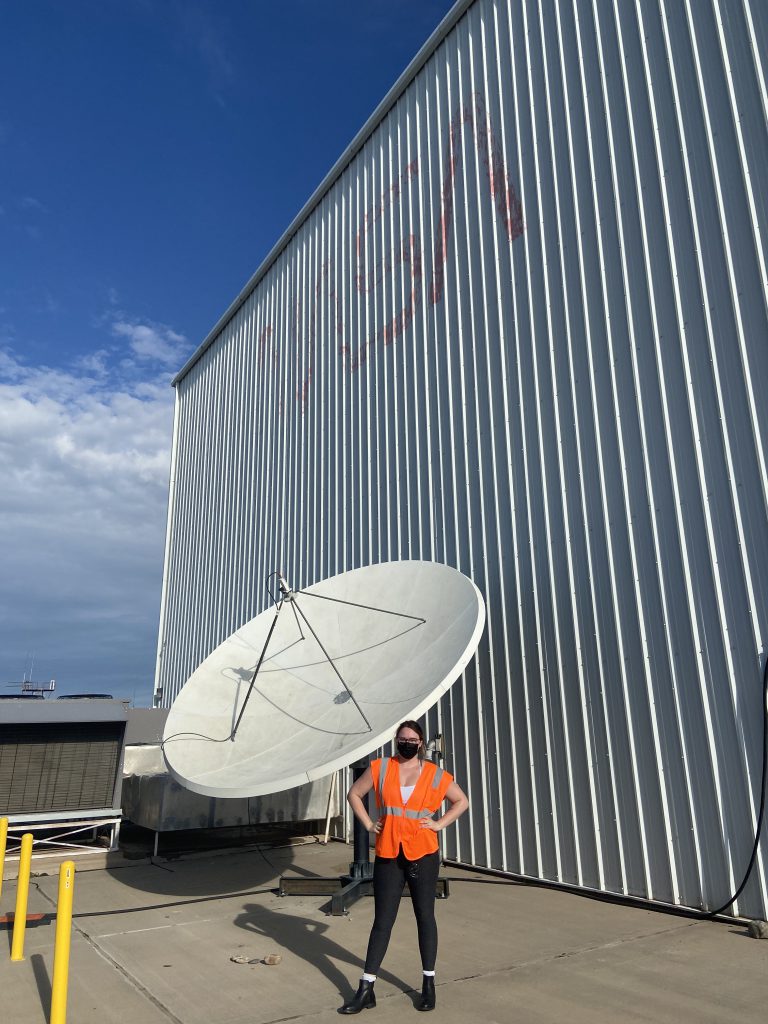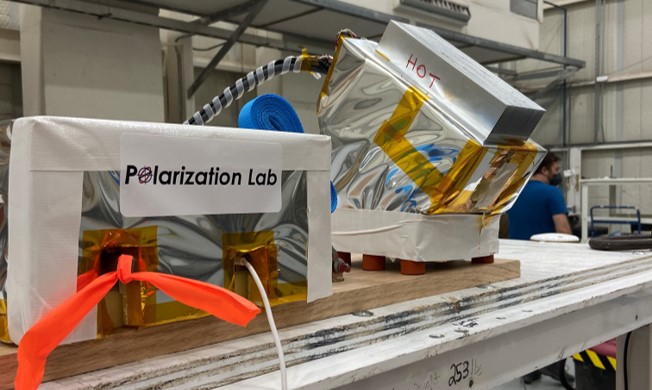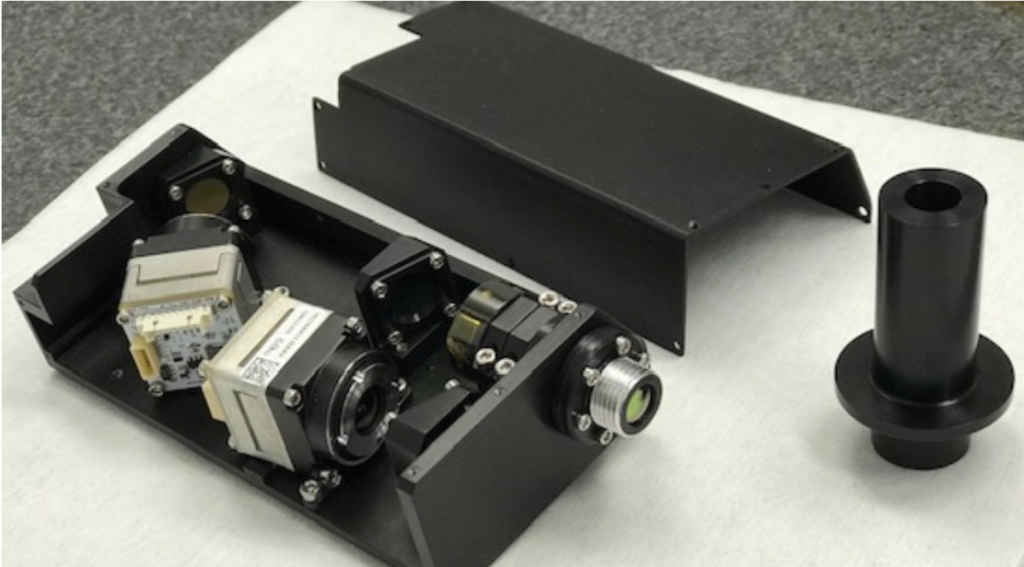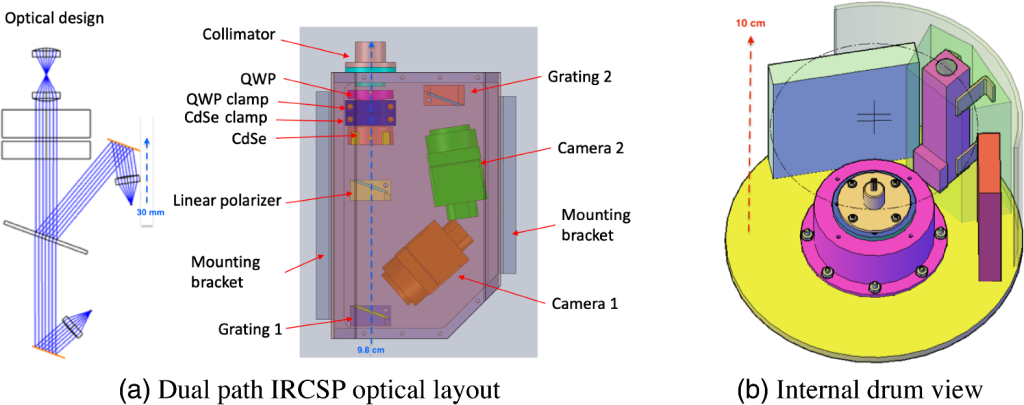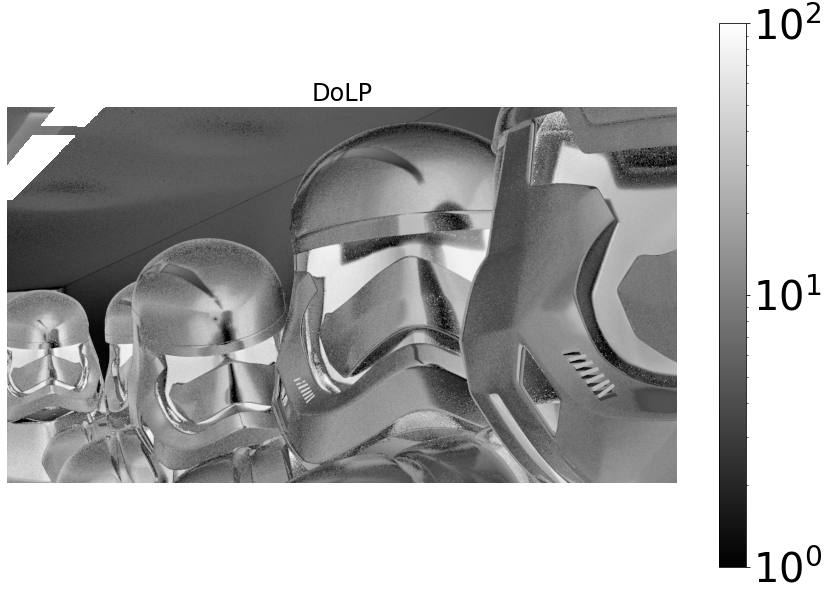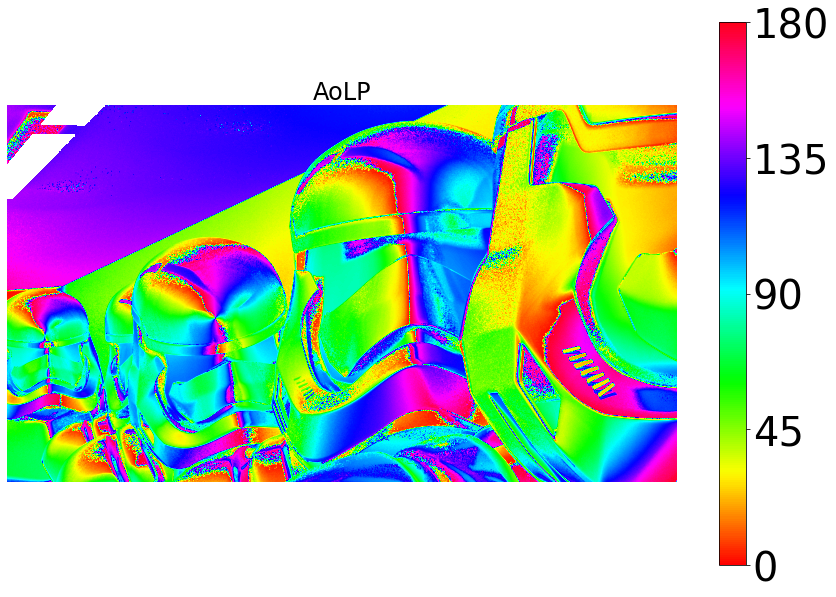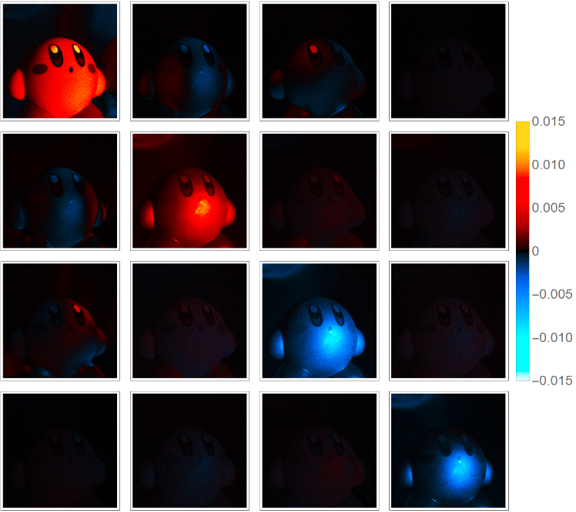Research
GitHub – Polarization Lab
IRCSP – Infrared Channelled Spectropolarimeter Project
Until recently, compact and rapidly deployable instruments operating in the long-wave infrared (LWIR) were not feasible due to the necessity of large and costly cooling systems for infrared detector architectures. In the past several years, the emergence of compact uncooled microbolometers has opened the door for LWIR remote sensing projects. In the summer of 2019, the Polarization Lab at the University of Arizona delivered the first prototype InfraRed Channeled Spectro-Polarimeter (IRCSP) to NASA’s Goddard Spaceflight Center for integration into the SWIRP CubeSat instrument (Sub-mm Wave and Infrared Polarimeters) funded by the 2016 Earth Space Technology Office’s Instrument Incubator Program. Less than 10 cm in length, the IRCSP measures the linear Stokes parameters (I, Q and U) with 1-micron spectral resolution from 8.5 -12.5 micron.
The SWIRP mission targets the measurement of cirrus ice clouds. Climate models must account for several sources of uncertainty in their analysis; one major source is the effect of clouds, and ice clouds in particular. The effect of ice particles embedded in the clouds is poorly constrained, which allows ice clouds to be used as a tuning parameter to balance the budget of incoming and outgoing radiation at the top of the atmosphere. This lack of precise knowledge of cloud ice and its microphysical properties leads to large uncertainty about clouds and their processes within the atmosphere. Thus, the 2017 Earth Science Decadal Survey (DS), recommended that a science payload with submillimeter wave (sub-mm) and longwave infrared (LWIR) radiometers be developed for such cloud ice measurement.
On August 30, 2021 the IRCSP flew on the NASA Columbia Scientific Ballooning Facility’s Salter714N test-flight out of Fort Sumner, NM. The instrument was retrieved successfully with no damage to the optical payload and over 150 minutes of flight data, achieving a maximum float altitude of 32.9 km. Data retrieved during the flight demonstrates the feasibility of utilizing commercially available microbolometers in compact rapidly deploy-able LWIR radiometers for atmospheric and terrestrial remote sensing. In addition, the 2021 flight collected the first ever down-viewing spectro-polarimetric measurements of clouds in the 8 – 12 micron bandwidth, motivating the continued pursuit of LWIR polarimetric data as a tool for the retrieval of cloud micro-physical properties.
ULTRASIP – UV Stokes Imaging Polarimeter Project
An Ultraviolet Stokes Imaging Polarimeter (ULTRASIP) was designed and developed for optically thin clouds and sky observations in the 360 nm – 450 nm range. ULTRASIP is a time-modulated polarimeter rotating a wire-grid polarizer in front of a 16-bit, water-cooled, back-illuminated CCD sensor. Polarized light scattering models will be compared in the visible and the UV to motivate measurements in this waveband. ULTRASIP aims to gain a deeper understanding of the changes in Earth’s climate system.
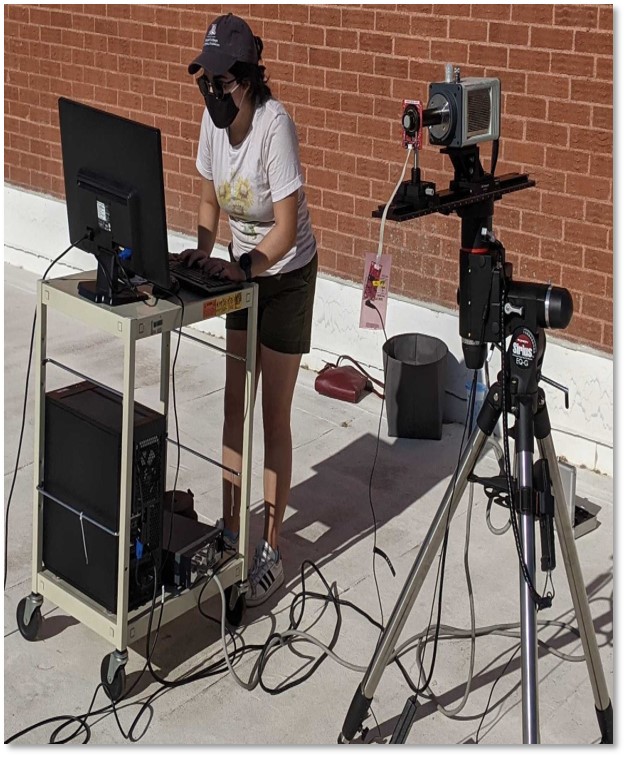
Physically Based Rendering (PBR) using Polarization
Physically-based renderings are becoming more widely used for virtual reality and augmented reality. We are using renderings to mimic light-matter interactions in a physically plausible way. We have added a polarization component to renderings which is not normally considered in PBR systems. The addition of the polarization component allows for more accurate renderings.
Polarization Light-Matter Interaction Models
Polarimetric measurements contain a wealth of information not provided by conventional irradiance measurements. Geometry, texture, and material all have signatures in polarized light scattering, and by understanding these, we can create simplified models for highly complex light-matter interactions. We then compare these models to measurements using state-of-the-art Mueller imaging polarimeters.


